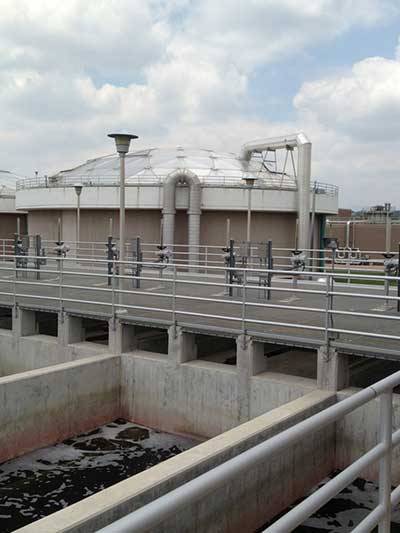Online Monitoring of Ammonium and Nitrate Helps Facility Meet Strict Discharge Limits
Problem:
Daily maximum discharge limits for ammonia and total inorganic nitrogen (TIN) require continuously exceptional performance at the Littleton Englewood Wastewater Treatment Plant (LEWWTP). Besides the typical daily fluctuations in ammonia loading, the situation at LEWWTP is further complicated by recycled ammonia loading from centrate. Operators needed a solution for monitoring and controlling nitrification and, subsequently, denitrification across their multiple-stage biological process.
Solution:
LEWWTP Operators understand the value of continuous monitoring. As John Wright, Operations Supervisor  points out, “You have no idea what’s going on in your process without it.” Therefore, online process monitoring is a key element of the LEWWTP process control strategy.
points out, “You have no idea what’s going on in your process without it.” Therefore, online process monitoring is a key element of the LEWWTP process control strategy.
When the existing dissolved oxygen (DO) probes that were used for aeration control became outdated and unreliable, side-by-side testing with several different models was conducted to find replacement instrumentation.
The IQ SensorNet 2020 system from YSI, a Xylem Brand provided the most accurate results and involved the least amount of operator attention. Operations recognized that the system could be easily expanded to also help them to solve the problems with nitrification and denitrification so ammonium and nitrate sensors were installed at critical locations to monitor the process and control the distribution of wastewater for the most efficient treatment.
Results:
The online monitoring system is deployed at multiple steps of the treatment process. Nitrate sensors are deployed at the influent and effluent of the solids contact tanks (SCT) where the objective is to remove BOD and push nitrification downstream to the nitrifying trickling filters (NTF) as intended. Ammonium sensors in the centrate return are used to control transfer of stored centrate to the biological treatment process.
Ammonium sensors in the pre-chlorination tanks are used to control the bypass of ammonia-rich secondary effluent around the nitrification process, thereby maintaining the critical ammonia to chlorine ratio for efficient operation of the effluent chloramination disinfection process. The multitude of applications means it's essential to maintain the sensors in peak condition. Therefore, Wright and his colleagues formed the Analyzer Task Force (ATF) to maintain the sensors, investigate questionable data, and continue to adapt and expand the monitoring system. For example, they upgraded their ISE-style nitrate sensors to optical nitrate sensors (the plant calls them “torpedoes”) to achieve increased reliability and less maintenance effort.


Additional Blog Posts of Interest:
Wastewater Aeration Control - Energy Cost Savings Examples
Optical Dissolved Oxygen Monitoring Makes Aeration Control Optimization Possible
Wastewater Monitoring & Control Instrumentation | How Does It Work?
Online Nitrate Monitoring with Optical Sensors for Wastewater Process Control | Webinar